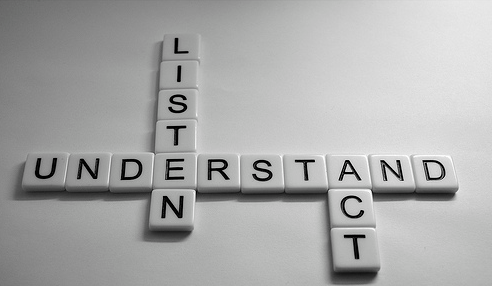The art of listening to customers (and its alternative)

24 August 2020
Listening to customers is an art for itself. While many loyalty programs incorporate such strategy to define future features, most fail to interpret correctly what they hear and/or to translate this into the appropriate action.
It is typically programs announcing devaluations in their loyalty programs, which start their message with « based on customer feedback ». Any seasoned frequent traveller understands immediately that no good news is going to follow.
Cynics might say that these programs have even not consulted any customers at all, but that actually might not be the case. Working with customer focus groups is common practice in the industry these days and this approach has indeed its charm – if applied properly.
But there are actually several issues to this approach. In most cases, programs either ask the right questions to the wrong audience or the wrong questions to the right audience. Too often, programs have predefined the answers they want to hear and adjust their questions accordingly.
The last example is probably Air Canada, proudly claiming that they’ve listened to thousands of customers when designing the new Aeroplan program, taking this listening-to-customers exercise probably to completely new heights, unheard of until now. While the program has indeed come up with some interesting new features, the qualification rules for the tier program remained virtually the same. A bit unsurprisingly, since this recognition part of the program was already managed by Air Canada itself before. Obviously, it is easier to question aspects of the program somebody else had designed than what they had done themselves.
When the management was challenged with the question why they didn’t change anything with that part of the program, the answer was that there was no need since interviewed customers expressed their satisfaction with the status quo. Logical? Only at very first sight and a nice example how listening to customers may lead to wrong results.
The simple mistake Air Canada did here is that they apparently asked customers, for whom the current system works. The right question to the wrong audience. There was no need for them to desire any changes. Either any changed rules would make the qualification more difficult for them or they would lead to more elite members fighting for the same capacity-limited benefits, such as complimentary upgrades. Indeed, neither of these two scenarios is desirable for existing elite members.
But if they had asked any non-elite members or elite members of competing programs, they would definitely have got a very different feedback and be faced with a much more challenging task, to weight the satisfaction of the current members against the opportunities to generate more business by adopting changes (and admitting that they didn’t get things right in the past).
The other underlying issue is that customers would not necessarily pounder any replies from a business perspective, but in a more opportunistic manner, hoping to achieve results, which they basically know that they are not realistic. It doesn’t cost to ask for more – but if they don’t get it, will they really change their purchase behaviour? Or more importantly, if they get it (at additional expenses for the program), will they really shift more business to you? Ultimately, all comes down to such questions and that is, where a lot of hypotheses are required, without any clear right or wrong decision.
While there are clear benefits of listening to customers on the paper, it is my experience that hardly anybody really masters that art in the context of loyalty programs. We usually don’t recommend putting too many efforts on this, especially since there is a very attractive and more scientific alternative: the performance measurement of your program.
Any program developments should indeed take the customer perception at least into consideration, next to any internal considerations. But the best way to understand where your program fails and has weaknesses that need to be addressed is to look at its real performance.
The data of a loyalty program is like its soul, opening up the full truth about it. As an example, customers would certainly claim in a qualitative manner that they are not happy with any too harsh expiry policies. But only data really shows you how much your program is suffering from it quantitatively and how much more business you might be able to hope to generate when loosening such rule. It then becomes a simple cost-benefit calculation.
The richer the program proposition, the more insightful data you can generate, allowing you really to understand all the ins and outs of your program, especially if you are able to apply some industry benchmark. This is not only more reliable than asking customers, but also a much quicker and cheaper exercise since all the required information is constantly at your fingertips.
The only remaining challenge is to be self-critical enough to assess the data honestly rather than hiding the truth. And that is where customer feedback and data might come together again: they represent a mirror, which sometimes is hard to accept. You need to be strong enough to look at the whole picture of truth in the mirror rather than at a small corner only. But the data approach definitely leaves less room for interpretation and errors.
And any future program changes will quickly turn into « based on customer acceptation ».







